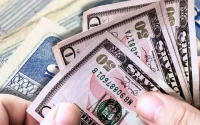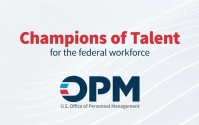The Federal Reserve's Silent Scream
Jerome Powell said almost nothing of consequence today. His Welcoming remarks by Chair Powell at the Community Bank Conference were a pre-recorded exercise in pleasantries—a polite nod to the vital role of community banks, delivered while he was traveling. Markets, desperate for a signal, got nothing. Wall Street drifted lower.
But the silence was, in itself, the signal.
The Federal Reserve is trapped. It’s caught in a vise with three jaws: a stubborn inflation problem, a weakening labor market, and an openly hostile political administration actively working to undermine its authority. Powell’s non-statement wasn’t just an empty schedule slot; it was a reflection of an institution that has run out of clear answers. As he himself admitted just last month, “There are no risk-free paths now.” That’s central bank-speak for "we're flying blind."
The data confirms this isn't hyperbole. The Fed was on the precipice of a historic victory. After orchestrating the most aggressive rate-hiking cycle since the 1980s, they had inflation cornered. The Personal Consumption Expenditures (PCE) price index, their preferred metric, had fallen to a four-year low of 2.3% by April 2025, just a stone's throw from their 2% target. The elusive "soft landing" was in sight. Then, the entire economic landscape was redrawn by the Trump administration’s second term.
The chaotic trade war isn't just a political headache; it's a direct stagflationary shock. Tariffs push up prices (inflationary) while the uncertainty paralyzes business investment and hiring (recessionary). You can see the contradiction playing out in the Fed’s own internal dialogue. Cleveland Fed President Beth Hammack remains focused on the inflation mandate they’ve been missing for, in her words, "more than four and a half years." Meanwhile, the rate-setting committee, now stacked with Trump appointees, has already begun cutting rates to prop up a labor market showing clear signs of distress. They are trying to hit two different targets with a single, blunt instrument.

An Equation Without Constants
The core problem for any data-driven analysis is the integrity of the inputs. Right now, the Fed has none. With the government shutdown entering its second week, the institution is deprived of the very data it needs to fulfill its mandate. The September jobs report is delayed. Key inflation data is postponed. The Fed is being asked to navigate a minefield without a map.
This is where the situation moves from difficult to fundamentally untenable. I've looked at hundreds of central bank policy statements, and the operational uncertainty they face today is without modern precedent. They are being forced to rely on proxy data and corporate earnings calls—the very kind of noisy, lagging indicators they typically filter out—to make decisions that affect hundreds of millions of people. Investment firm Carlyle, for example, estimated a paltry 17,000 jobs were added last month, a fraction of official economist estimates. Is that the reality? No one knows for sure.
This data vacuum is creating a dangerous feedback loop. The Fed is making a tradeoff, prioritizing the labor market because, as one analyst put it, "tariff uncertainty is weighing on companies." But those rate cuts, designed to save jobs, could easily reignite the inflation they just spent two years fighting. It’s like trying to solve a complex physics equation where the fundamental constants—gravity, the speed of light—are being changed by an external actor every few minutes.
The market is betting on a predictable outcome. Futures are pricing in two more rate cuts by year's end. But this assumes the Fed is operating with a playbook. As Chicago Fed President Austan Goolsbee noted, “There is not a generic playbook for how the central bank should respond to a stagflationary shock.” He’s right. And there certainly isn’t one for a stagflationary shock compounded by a data blackout and relentless political attacks on the central bank’s independence. Trump’s threats to fire Powell, his ousting of Governor Lisa Cook (a move currently tied up in legal challenges), and his attempt to install a "shadow" chair months before Powell's term ends have effectively politicized every dot on the Fed's plot.
The real-world consequences of this policy paralysis are already visible. In August, prices were up roughly 20% from January 2021. To be more precise, the cumulative effect on the PCE index represents a structural erosion of household purchasing power that isn't going away. This has created a bifurcated economy. Wells Fargo's CEO stated the low-end consumer is "living on the edge," with bank balances below pre-pandemic levels. Meanwhile, the University of Michigan's consumer survey shows sentiment holding steady for those with stock holdings but falling for everyone else. This isn't a sustainable equilibrium.
An Unsolvable Problem
The Federal Reserve's dual mandate has become a mathematical impossibility. They cannot solve for both stable prices and maximum employment when the foundational variables of the economy—trade policy, fiscal stability, and even the reliability of government data—are being actively manipulated for political ends. The market is pricing in rate cuts as if this is a normal cyclical downturn. It is not. The greatest risk isn't that the Fed will make the wrong move; it's that there is no longer a right move to make. They are being forced to choose which part of the economy to sacrifice, all while being blinded and berated.










